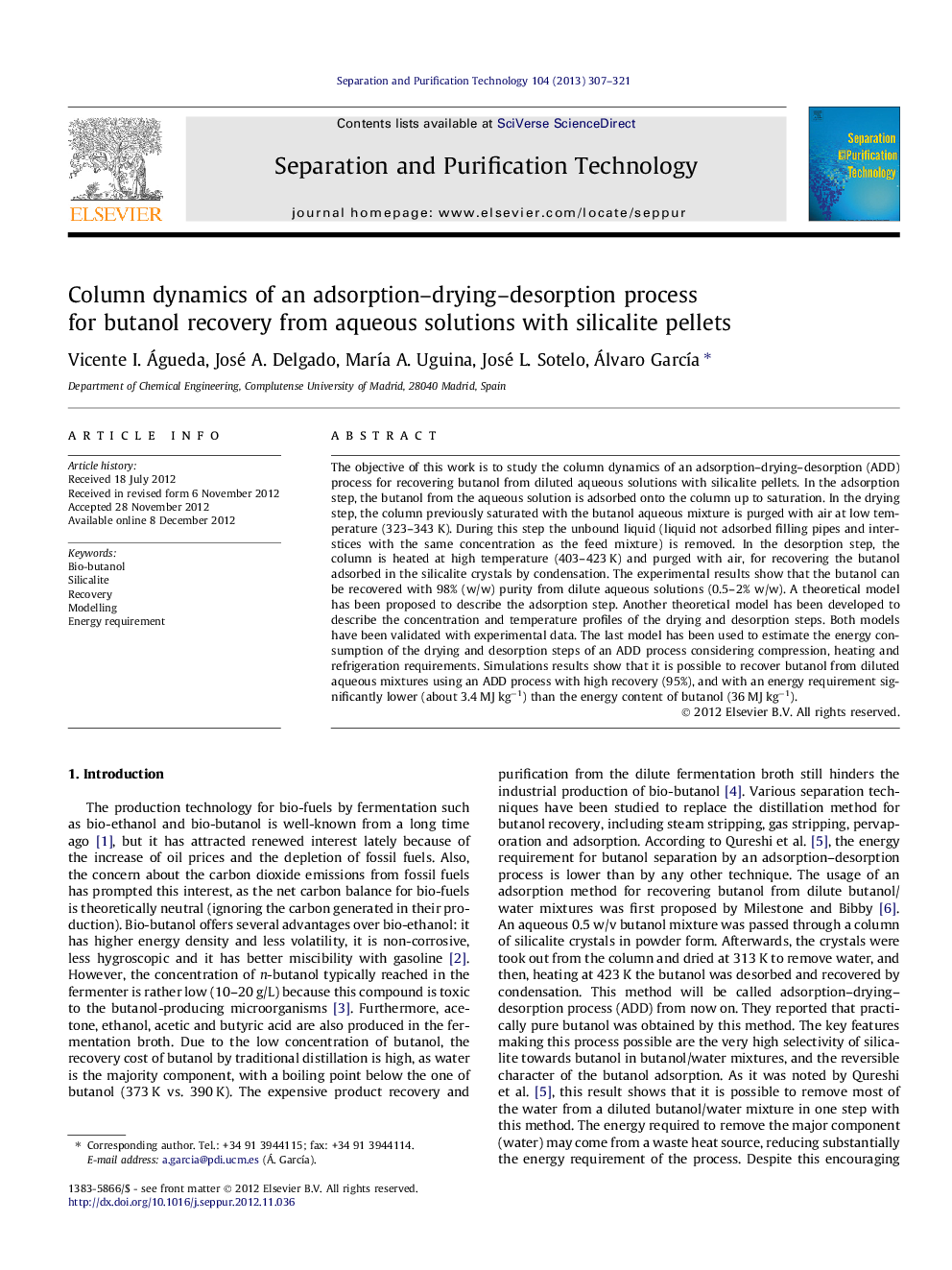| Article ID | Journal | Published Year | Pages | File Type |
|---|---|---|---|---|
| 641849 | Separation and Purification Technology | 2013 | 15 Pages |
The objective of this work is to study the column dynamics of an adsorption–drying–desorption (ADD) process for recovering butanol from diluted aqueous solutions with silicalite pellets. In the adsorption step, the butanol from the aqueous solution is adsorbed onto the column up to saturation. In the drying step, the column previously saturated with the butanol aqueous mixture is purged with air at low temperature (323–343 K). During this step the unbound liquid (liquid not adsorbed filling pipes and interstices with the same concentration as the feed mixture) is removed. In the desorption step, the column is heated at high temperature (403–423 K) and purged with air, for recovering the butanol adsorbed in the silicalite crystals by condensation. The experimental results show that the butanol can be recovered with 98% (w/w) purity from dilute aqueous solutions (0.5–2% w/w). A theoretical model has been proposed to describe the adsorption step. Another theoretical model has been developed to describe the concentration and temperature profiles of the drying and desorption steps. Both models have been validated with experimental data. The last model has been used to estimate the energy consumption of the drying and desorption steps of an ADD process considering compression, heating and refrigeration requirements. Simulations results show that it is possible to recover butanol from diluted aqueous mixtures using an ADD process with high recovery (95%), and with an energy requirement significantly lower (about 3.4 MJ kg−1) than the energy content of butanol (36 MJ kg−1).
► Aqueous butanol recovery by an adsorption–drying–desorption (ADD) process is studied. ► The process is carried out with silicalite pellets. ► Theoretical models are proposed to describe the adsorption, drying and desorption steps. ► The butanol is recovered with 98% (w/w) purity. ► The overall butanol recovery and the process energy requirement have been estimated.
